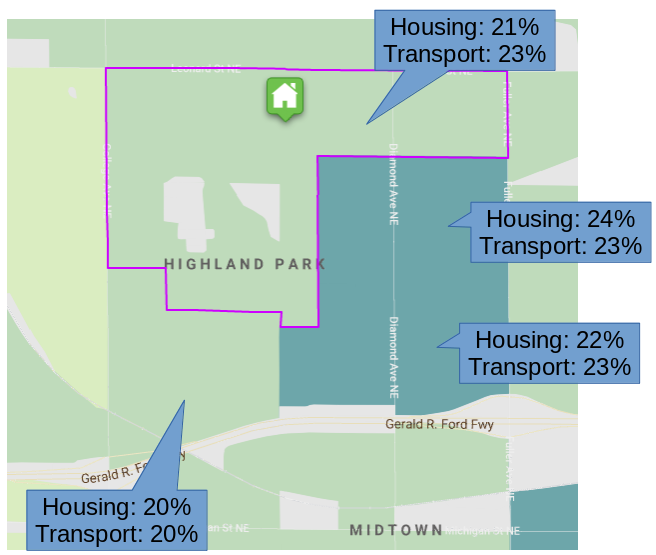Wondering what it costs to rent a unit in the neighborhood? We've been keeping track.
The "Req. Income" column is based on the federal definition of "affordable"; by that standard a household spending more than 30% of its gross income on housing is considered "cost burdened". This column is the minimum household income required to pay the annual rent by the 30% rule. This does not include other costs, such as utilities; in actuality the minimum would be somewhat higher than this calculation.
Some experts contest the federal 30% guideline and argue for a 50% H+T guideline. The H+T guideline sums a households Housing and Transportation costs, and classifies a household as “cost burdened” if that sum is more than 50% of the household’s annual gross income. The virtue of the H+T rules is that these values are very often inversely correlated. People move further from an urban center to find more affordable housing, which is a trade off for higher transportation costs.
The average resident of Highland Park - according to data from 2021 - are paying between 40% and 47% for for H+T. Here is a map of the four census tracts of the neighborhood:
H+T (2021) data for Highland Park
It is important to remember when looking at averages of this type of data the enormous advantage held by those who purchased their housing prior to ~2015. Households which have been in the neighborhood for a long time skew these numbers downward.
